The Sumerians lived in southern Babylonia from 4000 to 3000 BC and had strong spiritual beliefs. Their history is shrouded in mystery. We know that they were pantheistic and their gods were the personification of the elements and natural forces.
The Sumerians believed that first there was the primeval sea that gave rise to a united heaven and earth. Between heaven and earth came the air, whose main characteristic was expansion. The air produced the moon, then the moon produced the sun.
Once heaven and earth had been separated, plants, animals, and human life became possible. There were more than 3,000 Sumerian gods and goddesses, and the four most well-known gods in the Sumerian religion were An, Ki, Enlil and Enki.
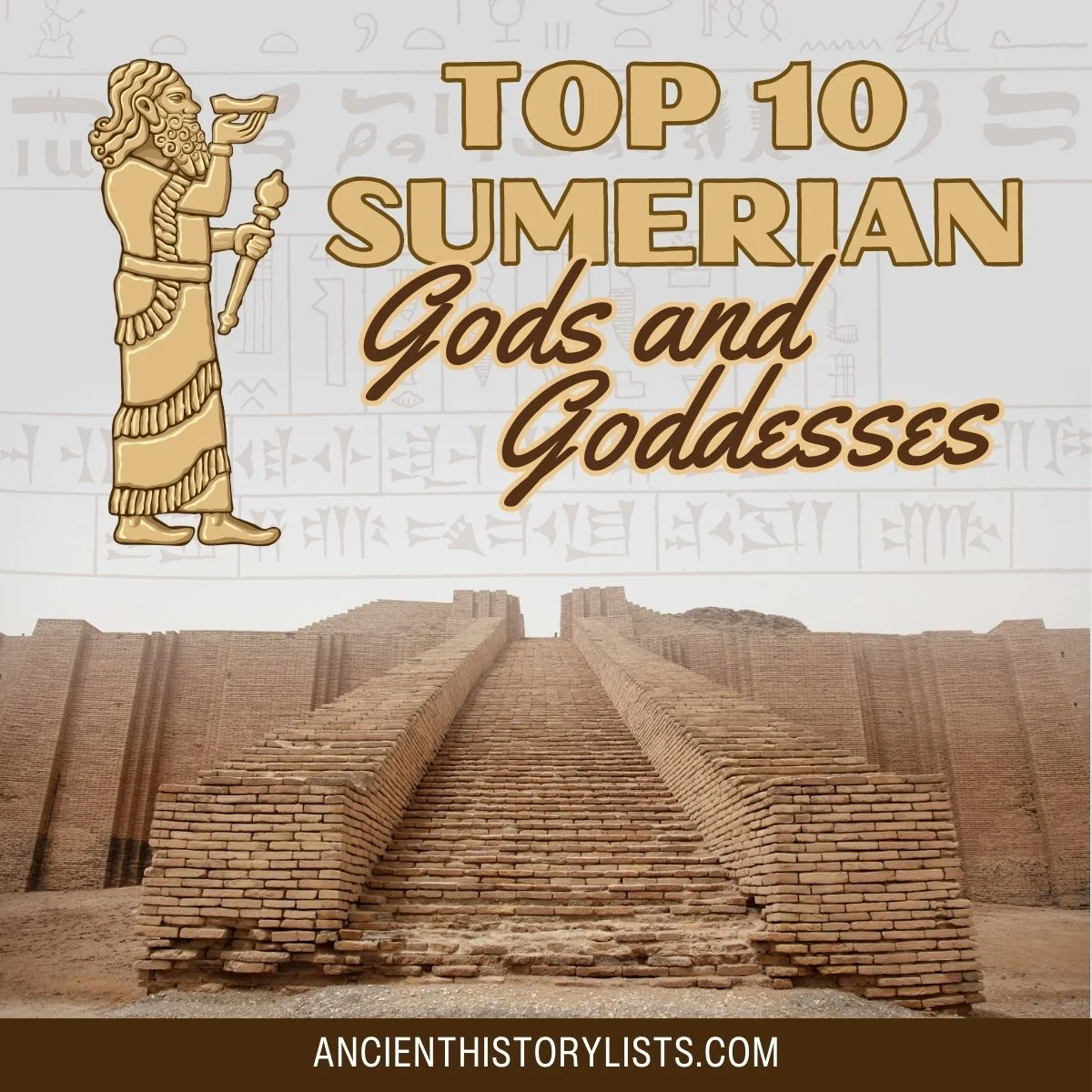
Here is a list of the 10 most important:
10. Nammu
Nammu was the one who gave birth to the first deities An (the god of heaven) and Ki (the earth goddess) and to many more of the ancient gods. Nammu was originally a personification of the primeval sea as the beginning of the world and one of the mother goddesses.
Her name is the same symbol as the one for fresh water (engur) which came from underground and had religious, fertilizing properties in Sumerian culture. She was also believed to be the mother of Enki, the water god. The union of An and Ki produced Enlil (the air god), who went on to separate the heaven father An from the earth mother Ki.
Nammu was also known as “the lady of the mountains.” In many poems, she is said to have created mankind by making a clay figurine which was then brought to life. Seven goddesses stood by to assist Nammu during the birth of mankind. According to Sumerian poetry, the goddess Ninmah acted as a midwife.
9. An
The god of heaven, An, was believed to have been conceived by the Sumerians as the supreme ruler of the pantheon. An is the Sumerian word for heaven, and he represents the father of all the gods. His wife is the earth goddess Ki.
It is An who, in Sumerian tradition, took over heaven when it was separated from earth, creating the universe as we know it. Although one of the most important deities, An was ill-defined and he is represented in art with obscure iconography and attributes. His symbol is a horned cap.
Heaven consisted of the sky and the space above the sky which was called the “great above” where the sky gods lived. Together with An, there was Nanna, the moon god; Enlil, the air god; and his wife Ninlil, the air goddess. There is also reason to believe that Enlil took the place of An as the leader of the pantheon according to sources from around 2500 BC.
8. Ki
Ki is the Sumerian word for earth, and she was personified as a goddess and female counterpart to An (the heaven god). In Sumerian myth, An and Ki produced a variety of plants on the earth. They were thought to be the offspring of the goddess Nammu and were originally united as one. Later they were separated by their son Enlil and moved away from each other. An became the ruler of heaven and Ki became the ruler of earth.
Ki is also identified with the goddesses Ninmah, the great queen; Ninhursag, the queen of the cosmic mountain; Nintu, the queen who gives birth; and many more. She set the stage for the organization of the universe, the creation of man, and the establishment of civilization.
7. Gula
The goddess Gula (whose name means “great”) was a healing goddess who understood disease and became the patroness of doctors. She was worshiped in different areas under different names such as Nintinuga, Ninkarrak, Meme, and the best known of all, Ninisina or “the lady of Isin.” These were all originally the names of other goddesses. She had many temples with the biggest one at Nippur. She was either the wife of Ninurta, the god of war, or Abu, the god of plants.
Gula gave birth to the healing god Damu, and to the god Ninazu (also associated with healing). Her sacred animal was the dog, and small model dogs were dedicated to her by her followers. Her son, Damu, was known for driving away demons and was especially honored at Isin, Larsa, and Ur. In Sumerian poetry, Damu is sometimes described as the daughter of Ninisina.
6. Ereshkigal
The Sumerian expression for “universe” is an-ki, literally “heaven-earth.” The sky gods lived in heaven, while the earth, consisting of the surface of the earth and the space below which was called the “great below” was where the underworld or chthonic deities lived. Ereshkigal, goddess of death and gloom, inhabited this nether world and was the older sister and bitter enemy of Inanna, the goddess of love and war.
Ereshkigal ruled the land of no return which was known by the names of Kigal or Irkalla. There was an unbroken rule that no one who entered the underworld could return without producing a substitute.
Inanna visited the underworld and told her vizier, or advisor, Ninshubur that if she did not return after three days, he was to alert the gods. Inanna descended to the nether world and approached Ereshkigal’s temple of lapis lazuli.
She passed seven gates into the nether world, and her jewels were removed piece by piece as she walked until she was brought naked and on her knees before Ereshkigal who turned her into a corpse. After Enlil and Nanna both refused to help, Ninshubur went to Enki, the god of wisdom, who came to Inanna’s rescue.
Though Inanna was brought to life, she had to produce a substitute to take her place in the nether world. She chose Dumuzi, the shepherd god and her spouse to go to the underworld. He is represented as the tragic victim of Inanna’s love and hate.
5. Utu
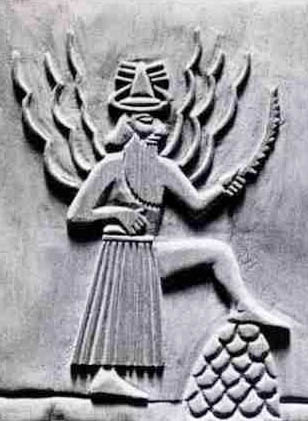
Utu was the Sumerian sun god. He represented the brilliant light of the sun, which returns every day to illuminate the lives of mankind, as well as providing the warmth to enable the plants to grow. In Sumerian tradition, he was represented with a saw knife and fiery rays.
Utu was the son of Nanna, the moon god, and the twin brother of Inanna, the goddess of love and war. The principal temple of Utu, called E-babbar or White House was at Sippar. The cult of Utu can be traced back to very early times. He was described as bearded and long-armed, and it is thought he emerged from the doors of heaven at dawn and made a daily journey across the skies.
During his journey across the skies, he saw everything. That is why Utu was known as a god of truth and justice. As a protector of good and destroyer of evil, he also had a warrior aspect to his personality. Utu’s main function was to supervise the moral order, since justice, truth, and righteousness were important to the Sumerians. His daughter was Mamu, one of several goddesses associated with dreams (mamud being the Sumerian word for dream).
4. Nanna
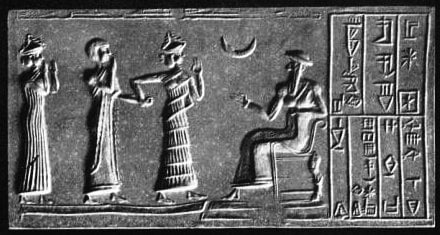
Nanna, the moon god, was the major astral deity of the Sumerians, born of Enlil, the air god, and his wife Ninlil, the air goddess. Ninlil followed her mother’s instructions and as a consequence was impregnated by “the water” of Enlil and conceived the moon god Nanna.
Nanna brought light to the dark lapis lazuli sky. The “little ones” (the stars), were scattered around like grain while the “big ones” (the planets), walked around the moon. Nanna and his wife Ningal were the parents of Utu, the sun god, who was said to “rise in the mountains of the east and set in the mountains of the west.”
Nanna was one the patron deities of Ur. The god Nusku, a god associated with fire and light, was regarded as his son. He was also the minister of Enlil. In magical incantations, Nusku was one of the gods called upon to assist in the burning of sorcerers and witches. He was also a protective guardian during the night when he watched over those who were asleep, bringing them good dreams and preventing nightmares.
3. Enki
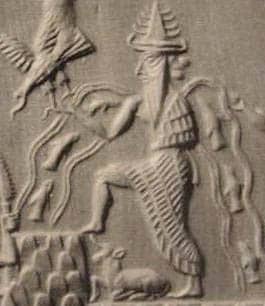
In Western mythology and religious tradition, ancient Sumer had lush vegetation and unpredictable water resources. Enki, the great Sumerian water god, was one of the four creation deities of Sumer, and the god of fresh water, male fertility, and knowledge. He was represented with flowing streams of water and swimming fishes. According to legend, he filled the Tigris and Euphrates rivers with sparkling water and fish.
Enki was also associated with wisdom, magic, incantations, and arts and crafts. His most important role, however, was to offer the king “understanding, skill and knowledge.” Enki was a son of An, the heaven god. He was the patron deity of Eridu, and his most important cult center was the E-abzu or Abzu House at Eridu. Enki was always seen as favoring mankind. In Sumerian poetry, he was concerned with every aspect of human life and organized every feature of the civilized world in great detail.
In art, Enki was represented as a seated god with a long beard surrounded by channels of water. Through legends, it is unclear who was more important: Enki or Enlil. Enki, the god of wisdom, organized the earth according to the decisions of Enlil, who made the general plans. The execution of these plans was left to Enki who was wise, skillful, handy, and resourceful.
2. Enlil
Enlil was one of the most important gods in the pantheon. His wife was the air goddess Ninlil, and among the children of Enlil are the goddess Inanna and the gods Nanna, Ninurta, Utu, and many more. The legend is that Enlil found himself living in utter darkness in the sky.
He therefore had the moon god Nanna brighten the darkness of his house, followed by the sun god Utu, who became even greater than his father. The main center of his cult was the temple of E-kur, or the Mountain House, at Nippur, and Enlil was often called “the great mountain” and “king of the foreign lands.”
He has been described as a supreme lord, father, creator, and a “raging storm.” Enlil had the important task of allocating land and kingship to the kings and was a most beneficent god, responsible for planning and creating most of the features in the cosmos.
In many books, he is described as a violent and destructive god, but it is clear that in the myths, he was a friendly, fatherly god, who ensured the safety and wellbeing of all humans, particularly the inhabitants of Sumer. The Tablet of Destinies was one of the objects which gave Enlil the power to determine the destinies of the world.
According to legend, it was both Enlil and Enki who sent Labar, the cattle god, and Ashnan, the grain goddess, from heaven to earth to give mankind cattle and grain.
1. Inanna
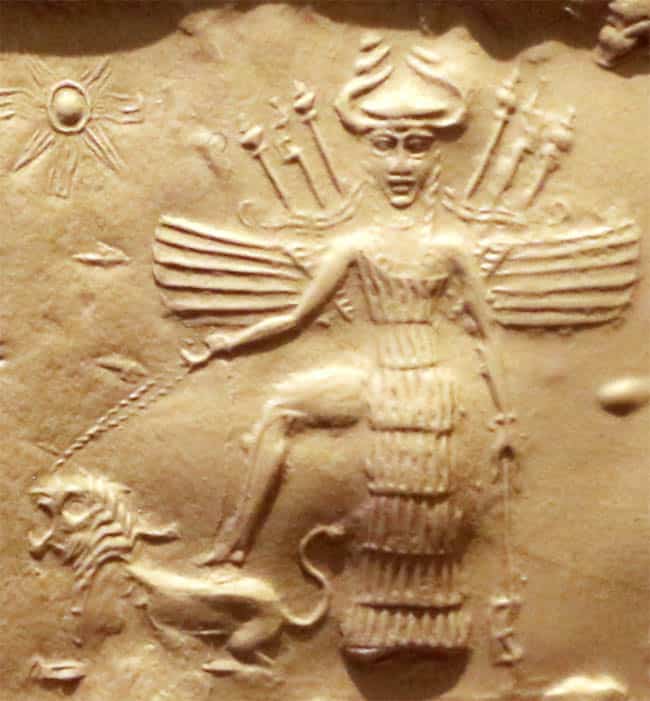
The goddess Inanna was the most important female deity of the ancient period. She was the goddess of love, war, and female fertility. Throughout Sumerian history, as a ruler of the Erech city-state, she was primarily responsible for sexual love and procreation as the life-giving goddess of love, ensuring the prosperity of the land and its people.
Inanna was the daughter of Enlil and twin sister of the sun god Utu. She also had a sister, Ereskigal, who was queen of the underworld. Various Sumerian poems are about Inanna and her love for Dumuzi and how she was ultimately responsible for his death. She was a patron of Uruk, where her principal shrine E-ana, or House of Heaven, was located.
The personality of Inanna can be divided into three quite separate parts: goddess of love and sexual behavior, especially connected with extramarital sex and lust; a warlike goddess fond of battle, violence, and power, standing next to her favorite kings as they fight; and Inanna as the planet Venus, the morning and evening star.
She was also famous for taking one hundred divine decrees governing all cultural and political achievements which made up the Sumerian civilization in Enki. Among these decrees were those referring to lordship, wisdom, understanding, victory, judgment, and decisions.
Conclusion
In many of the most important Sumerian cities, there was a close relationship between religion and government. Until the 1800s, when the lost civilization was discovered, no one knew of the existence of a land called Sumer in ancient Mesopotamia (modern-day Iran and Iraq).
Their gods An, Enlil, Enki, Ninhursag, Nanna, Utu, and Inanna were the seven gods who “decreed the fates,” together with around 3,000 more. Unique to Sumerian religion is the fact that there is an absolute inferiority of men to gods. In other religions, the faithful are afforded the comfort of life after death.
Here it is impossible for men to achieve any sort of paradise, which is reserved only for the immortal gods, not for mortal men.
Inanna might have been popular, but she was a ways down the totem-pole. An was the great god in heaven and his two sons were Enki who was sent to Earth first and then Enlil. Enlil was ranked higher of the two, but Enki created man. Inanna was known to Akkadians, Babylonians, and Assyrians as Ishtar and Romans as Venus. She was the hot babe.
I have been reading about the Sumerian Gods for quite some time. Heaven and earth was very confusing until I discovered something. I have been working on the Indus script for several decades and I found that the ‘fish’ signs have a counterpart in Sumer. The horned ‘fish’ signs undoubtedly represent Innana the goddess of love. I deciphered the ‘fish’ sign and found that it represents woman. Heaven is the Indus empire, earth represents Sumer and its various kingdoms, and the underworld represents the region south of Mesopotamia that include the islands in the Persian Gulf. There was bitter rivalry among the three. Especially among the rulers who hated each other even though they were siblings. Sky God who ruled heaven, ruled the great ranges of the snow clad Hindukush, the Karakoram and the Himalayas. This region is literally heaven. There is no place on earth that is so beautiful and so fertile. Earth was Sumer, it was created by the migrants from the Indus Valley. The underworld was the maritime region, whose strength was overseas trade and wealth. The Gods were jealous and they guarded their kingdoms zealously. The legendary city of Aratta was in the Indus Valley. It can be translated as the land of six cities and six rivers. It was rich in grains, gold, and lapis lazuli.
Very interesting hypothesis, the connection you make between IVC and Sumer, there are several parallels with Hindu deities. I’m not sure the timelines of the two civilizations align? What are the best online resources to research this further?